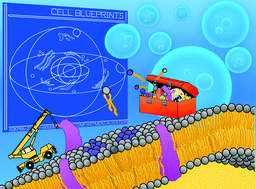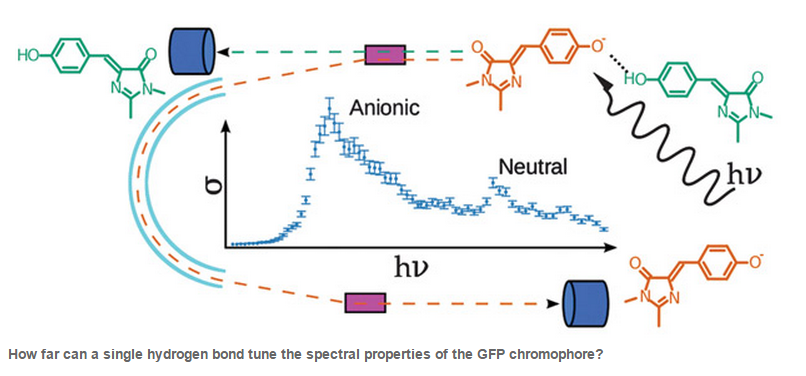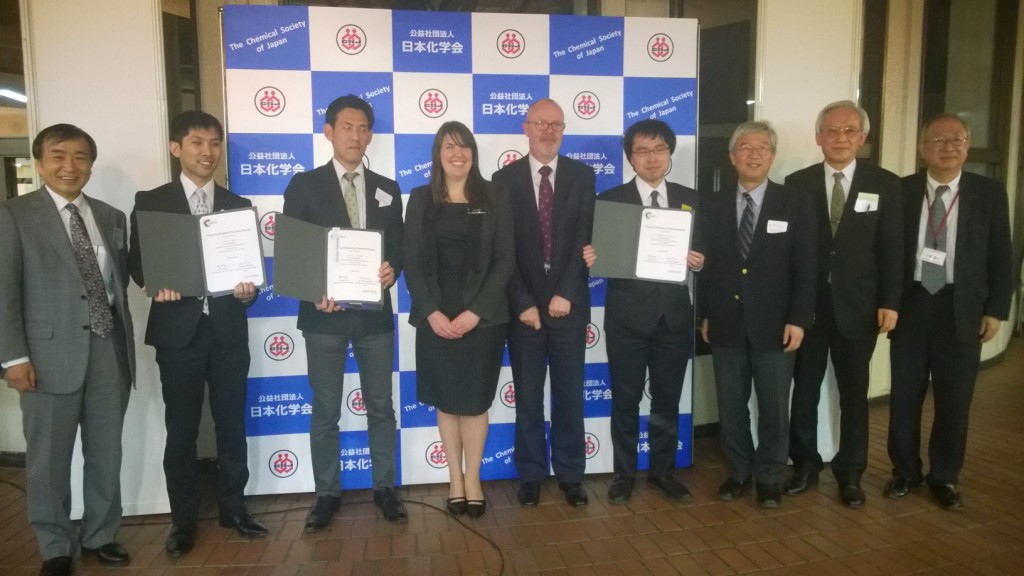 Image Credtit: ACMM Image Credtit: ACMM |
PCCP is now open for submissions to the themed issue ‘Developments in Density Functional Theory’. This issue aims to highlight state-of-the-art density functional theory (DFT), ranging from mathematical development of the formalism, via software development and development of bonding and reactivity models through applications in physical, (in)organic, and biological/supramolecular chemistry. Contributions that provide insight into the density functional model for the electronic energy itself, as well as those that describe its application to topical problems in chemistry and physics will be welcomed.
This themed issue has been arranged to coincide with the 70th birthday of Professor Dr Evert Jan Baerends who has made an immense contribution to the field of theoretical chemistry in general and DFT in particular. In honour of this event, the Evert Jan Baerends Symposium is to be held at the Amsterdam Center for Multiscale Modeling (ACMM), in the Netherlands on 25th September 2015. The deadline for submissions to this themed issue is 15th January 2016 and the issue will be published later in the year. If you would like more information on making a submission, please contact the editorial office directly, pccp-rsc@rsc.org. |
Author Archive
Developments in Density Functional Theory – upcoming PCCP Themed Issue
Surface-enhanced spectroscopies
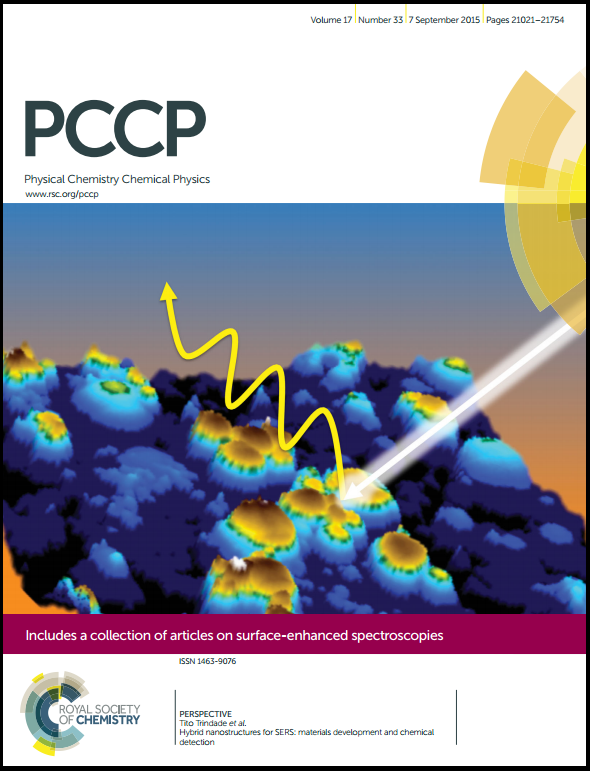 |
Novel types of spectroscopies with promising technological applications have been developed through the combination of molecular spectroscopies based on infrared absorption, Raman scattering, and fluorescence emission with metal nanostructures generating very high locally increased electric fields upon resonant excitation. This PCCP themed collection, ‘Surface-enhanced spectroscopies‘, brings together contributions from various disciplines (physics, chemistry, materials science, engineering, life sciences) and covers the full range of topics from fundamentals to methods and applications.
The Guest Editors for this themed collection are Rudolf Holze (Chemnitz University of Technology, Germany) and Sebastian Schlücker (University of Duisburg-Essen, Germany). Their Editorial can be viewed for free until 30th September 2015, along with this selection of articles: |
In situ Raman and surface-enhanced Raman spectroscopy on working electrodes: spectroelectrochemical characterization of water oxidation electrocatalysts, Khurram S. Joya and Xavier Sala, Phys. Chem. Chem. Phys., 2015,17, 21094-21103, DOI: 10.1039/C4CP05053C
Plasmonic properties of regiospecific core–satellite assemblies of gold nanostars and nanospheres, A. Swarnapali D. S. Indrasekara, Roney Thomas and Laura Fabris, Phys. Chem. Chem. Phys., 2015,17, 21133-21142, DOI: 10.1039/C4CP04517C
Bio-sensing with butterfly wings: naturally occurring nano-structures for SERS-based malaria parasite detection, Natalie L. Garrett, Ryo Sekine, Matthew W. A. Dixon, Leann Tilley, Keith R. Bambery and Bayden R. Wood, Phys. Chem. Chem. Phys., 2015,17, 21164-21168, DOI: 10.1039/C4CP04930F
Surface- and tip-enhanced resonant Raman scattering from CdSe nanocrystals, E. Sheremet, A. G. Milekhin, R. D. Rodriguez, T. Weiss, M. Nesterov, E. E. Rodyakina, O. D. Gordan, L. L. Sveshnikova, T. A. Duda, V. A. Gridchin, V. M. Dzhagan, M. Hietschold and D. R. T. Zahn, Phys. Chem. Chem. Phys., 2015,17, 21198-21203, DOI: 10.1039/C4CP05087H (Open Access)
International Symposium on Relations between Homogeneous and Heterogeneous Catalysis -ISHHC17
The 17th International Symposium on Relations between Homogeneous and Heterogeneous Catalysis (ISHHC17), was held at Utrecht University between 12th-15th July, 2015. The opening ceremony took place in the Dom church in the city centre, with plenary lectures given by Professor Robert Schlögl (Fritz Haber Institute of the Max Planck Society, Germany) and Professor Jan van Hest (Radboud University, the Netherlands).
Catalysis Science & Technology and PCCP were proud to sponsor two poster prizes during the event. These were awarded to Amanda E. Anderson (Christopher J. Baddeley and Paul A. Wright) of EaStCHEM School of Chemistry, University of St. Andrews (UK) for her poster, ‘Immobilization of Nanoparticles in Metal Organic Frameworks for Tandem Catalysis’; and to Pim Huat Phua (Boon Ying Tay, Cun Wang, Ludger Paul Stubbs) of Institute of Chemical and Engineering Science (A*STAR) (Singapore), for his poster, ‘Hydrogenation of Levulinic acid to γ-valerolactone: Homogeneous vs Heterogeneous Catalysis’.
 |
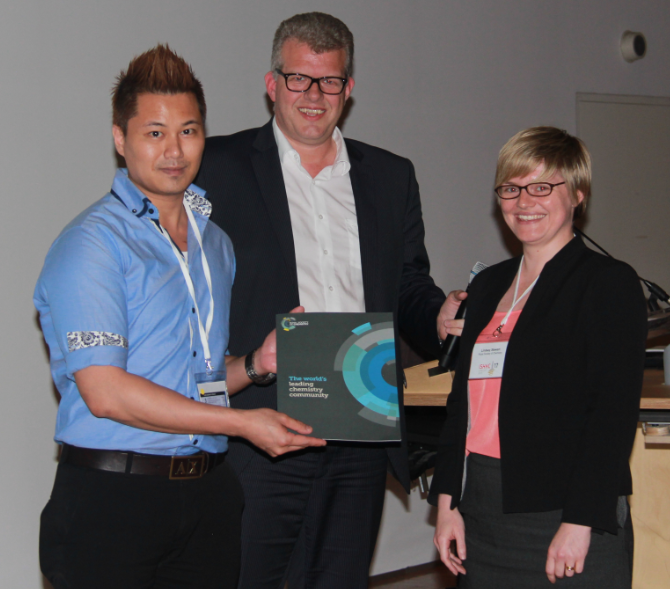 |
Chemical compartmentalisation by membranes: from biological mechanism to biomimetic applications
This PCCP themed issue is devoted to research into understanding, mimicking and harnessing the compartmentalisation of biology using in vitro model systems. ‘Chemical compartmentalisation by membranes: from biological mechanism to biomimetic applications‘ explores the methods physical scientists have developed to reconstitute in vitro models of biologically functional interfaces and compartments, whether they may be membranes composed of natural lipids, or biomimetic self-assembled membranes constructed from block copolymers or polyelectrolytes.
The Guest Editors for this themed collection are Barbara Ciani (University of Sheffield, UK) and Paul Beales (University of Leeds, UK) and their Editorial can be views for free until the 31st August 2015, along with this selection of articles:
|
Credit: Barbara Ciani and Paul Beales |
Bioinspired nanoreactors for the biomineralisation of metallic-based nanoparticles for nanomedicine, Jennifer Bain and Sarah S Staniland, Phys. Chem. Chem. Phys.,2015,17, 15508-15521, DOI: 10.1039/C5CP00375J
Protein synthesis in artificial cells: using compartmentalisation for spatial organisation in vesicle bioreactors, Yuval Elani, Robert V. Law and Oscar Ces, Phys. Chem. Chem. Phys.,2015,17, 15534-15537, DOI: 10.1039/C5CP05933F (Open Access) Mechanical and molecular basis for the symmetrical division of the fission yeast nuclear envelope, Stefania Castagnetti, Bojan Božič and Saša Svetina, Phys. Chem. Chem. Phys.,2015,17, 15629-15636, DOI: 10.1039/C5CP01243K Native silica nanoparticles are powerful membrane disruptors, Hend I. Alkhammash, Nan Li, Rémy Berthier and Maurits R. R. de Planque, Phys. Chem. Chem. Phys.,2015,17, 15547-15560, DOI: 10.1039/C5CP05882H |
A single hydrogen bond affects photophysics of chromophores
Green fluorescent protein (GFP) is a luminescent protein with a central chromophore and is used in biological imaging. By modifying the chromophore itself or the protein environment, the photophysical properties can be fine-tuned, yet until recently this has not been well understood. However, Lars Andersen (Aarhus University) and his group have developed a laser-action spectroscopy technique to enable the chromophore to be studied in a vacuum. This has revealed that a single hydrogen bond initiated a 0.5eV shift in the absorption spectrum of the GFP chromophore and highlights the importance of understanding the biophysics of chromophores and how this can help in the development of new colour chromophores.
Interested to know more?
Read the full article in Chemistry World by Michaela Muehlberg.
Or, take a look at the original communication which is free to access until 6th August 2015:
How far can a single hydrogen bond tune the spectral properties of the GFP chromophore, H. Y. Kiefer et al., Phys. Chem. Chem. Phys., 2015, DOI: 10.1039/C5CP02764K
Bunsentagung 2015 – Poster Prize Winners
The 114th General Assembly of the German Bunsen Society for Physical Chemistry, Bunsentagung 2015, was held on 14-16th May 2015 in Bochum, Germany. PCCP were proud to award 16 poster prizes that were presented by Professor Joachim Sauer of Humboldt University of Berlin (pictured).
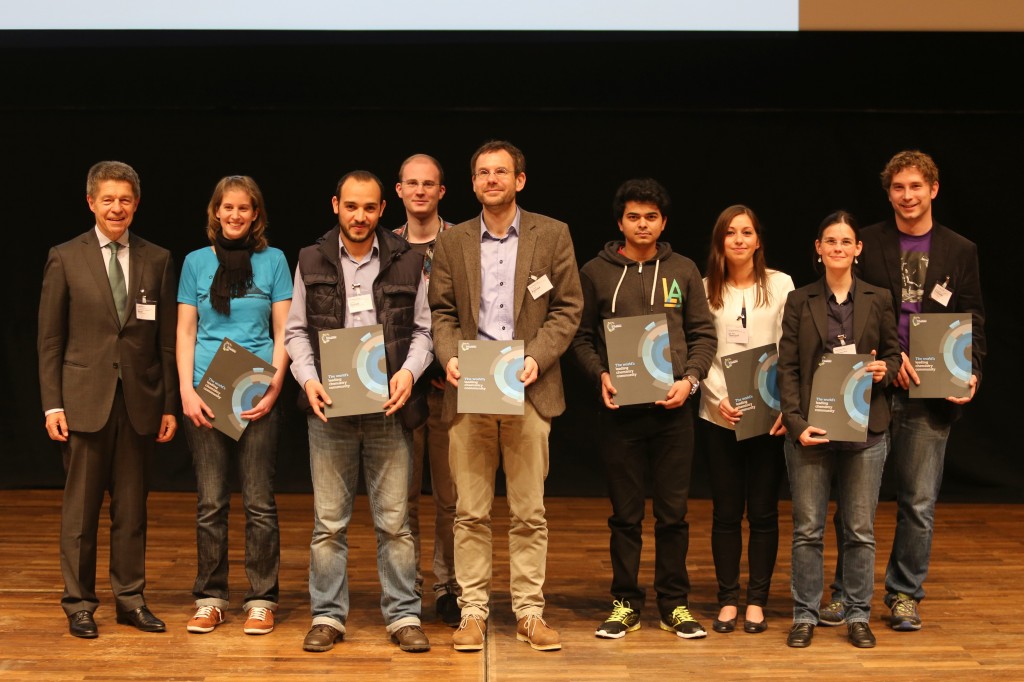 |
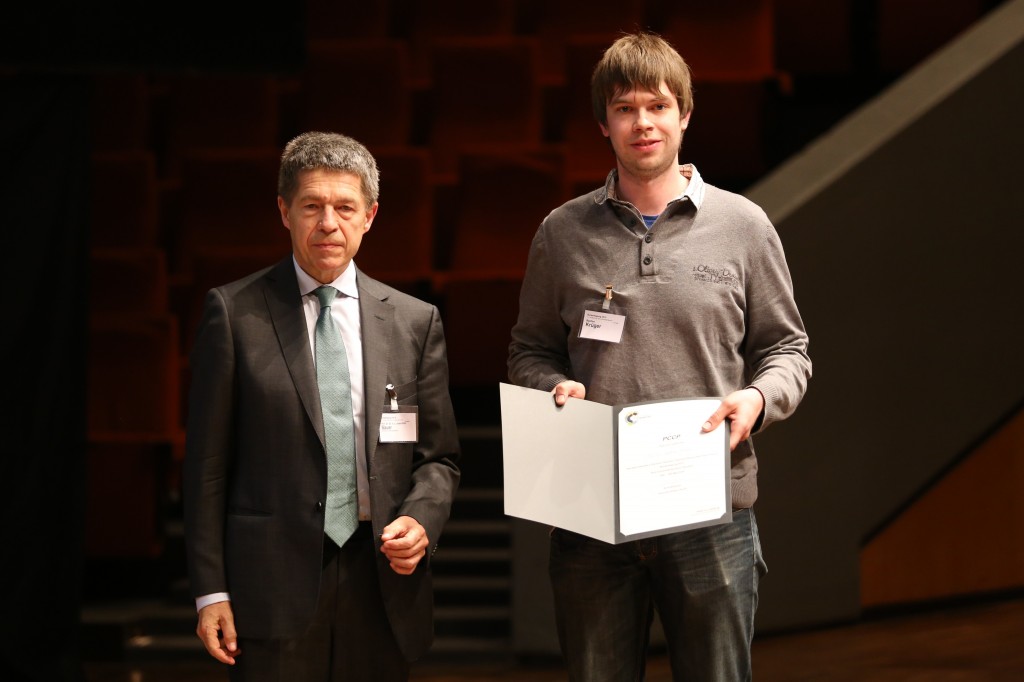 |
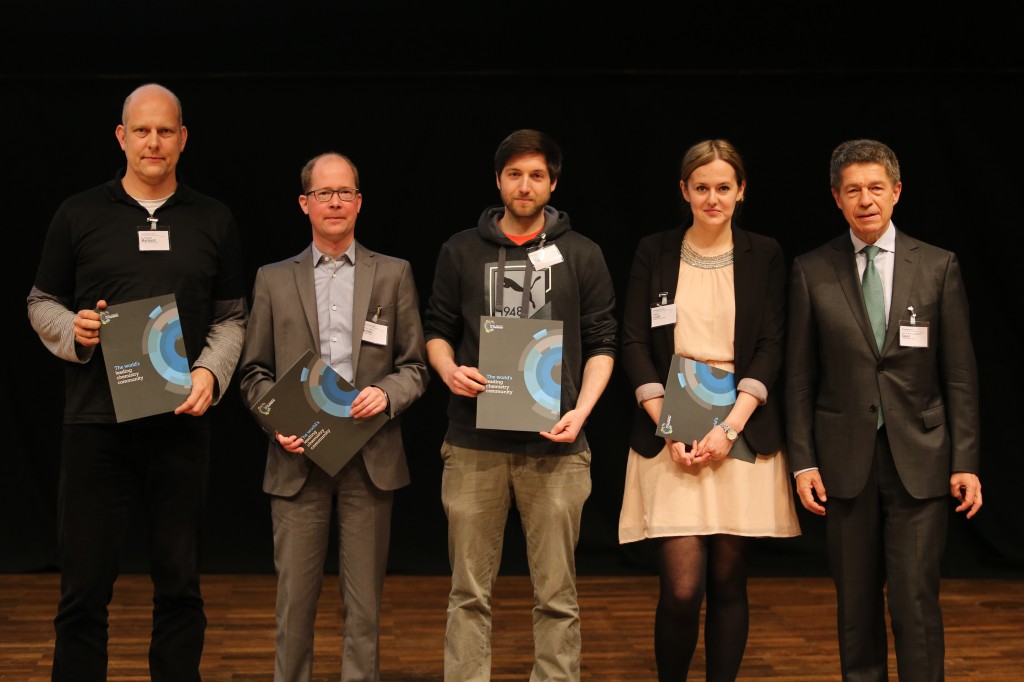 |
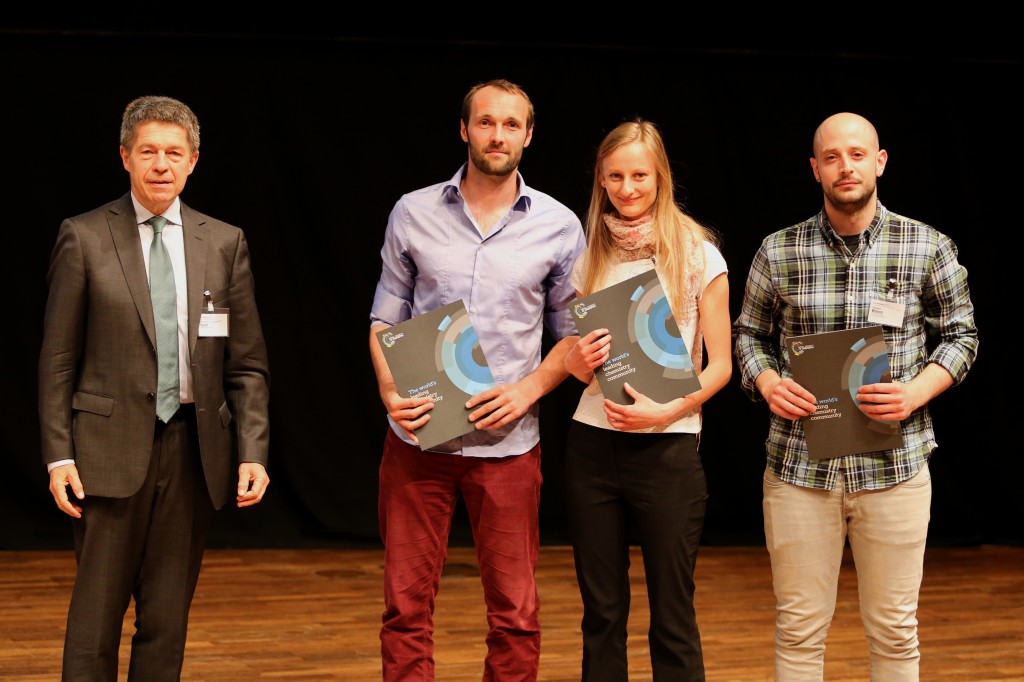 |
Bunsentagung 2015 Poster Prize Winners:
Vasileios Balos, MPI for Polymer Research, Mainz/D
Andre Fielicke, TU Berlin/D
Stefan Frittmann, Karlsruhe Institute of Technology/D
Norah Heinz, Universität zu Köln, Germany
Max Kauer, Ruhr-Universität Bochum/D
Dr Tilman Kottke, Universität Bielefeld/D
Bastian Kruger, Universität Göttingen/D
Svenja Maria Janke, Universität Göttingen/D
Jessica Luck, Helmholtz-Institut Ulm für elektrochemische Energiespeicherung/D
Dr Hubertus Marbach, Universität Erlangen-Nürnberg/D
Dr Konrad Meister, FOM Institute AMOLF, Amsterdam/NL
Suraj Naskar, Universität Hannover/D
Ibrahim Sadiek, Universität Kiel/D
Dominik Spiegel, Universität Düsseldorf/D
Anke Stamm, TU Kaiserslautern/D
Banu Yesilyurt, Universität Köln/D
Theoretical chemistry developments: from electronic structure to simulations
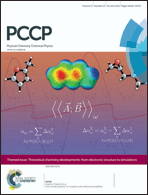 |
PCCP would like to introduce this week’s themed issue that explores theoretical chemistry, ranging from electronic structure theory to molecular dynamics simulations. ‘Theoretical chemistry developments: from electronic structure to simulations‘ aims to give an overview of developments in the field and give a voice to the younger researchers who are shaping the future through the development of theoretical tools that will dominate the field of quantum chemistry.
The guest editors of the issue are Barbara Kirchner (University of Bonn) and Frank Neese (Max-Planck Institute for Chemical Energy Conversion) and their editorial can be viewed for free untill 30th July 2015, along with this selection of articles: Simulations of room temperature ionic liquids: from polarizable to coarse-grained force fields, Mathieu Salanne, Phys. Chem. Chem. Phys., 2015,17, 14270-14279, DOI: 10.1039/C4CP05550K Towards an ab initio description of the optical spectra of light-harvesting antennae: application to the CP29 complex of photosystem II, Sandro Jurinovich, Lucas Viani, Ingrid G. Prandi, Thomas Renger and Benedetta Mennucci, Phys. Chem. Chem. Phys., 2015,17, 14405-14416, DOI: 10.1039/C4CP05647G How simple is too simple? Computational perspective on importance of second-shell environment for metal-ion selectivity, Ondrej Gutten and Lubomír Rulíšek, Phys. Chem. Chem. Phys., 2015,17, 14393-14404, DOI: 10.1039/C4CP04876H |
Awards for Achievements in Physical Chemistry
PCCP is pleased to announce that the winners of the 2014 awards for achievements in physical chemistry, received their prizes on 5th May 2015 at the University of Birmingham. Professor Helen Fielding of UCL presented these awards on behalf of the Faraday Division.The winners of the 2015 awards have now also been announced.
The 2014 winners:
Harrison-Meldola Memorial Prizes 2014 Winner – David Glowacki, University of Bristol/Stanford University
Bourke Award 2014 Winner – Professor Ann McDermott, Columbia University
Chemical Dynamics Award 2014 Winner – Professor Andrew Orr-Ewing, University of Bristol
Liversidge Award 2014 Winner – Professor Michael Ashfold, University of Bristol
 |
Left: Andrew Orr-Ewing, Helen Fielding, David Golwacki and Michael Ashfold
Right: Ann McDermott and Helen Fielding |
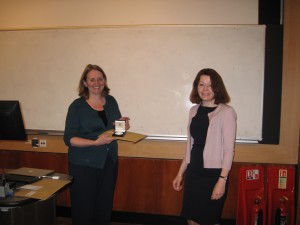 |
PCCP Tulip2015 Awards
We are delighted to announce the winners of the PCCP Tulip2015 awards that were given at the Tulip2015 Summer School on Modern Developments in Spectroscopy in Noordwijk in the Netherlands. This year, there were two winners of the prize, best presentation went to Sana Habka of CEA Saclay, France for her poster on “Gas Phase Spectroscopy of Zwitterionic Complexes” and best layout went to Ana Krin of Max-Planck-Institut für Struktur und Dynamik der Materie, Hamburg, Germany for her poster on “Enantiomer Identification in Mixtures Using Broadband Microwave Spectroscopy”. The winners each received a certificate and a cash prize.
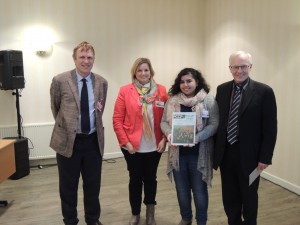 |
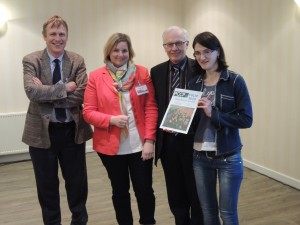 |
Pictured (left): Prof. Wybren Jan Buma (co-chair of the Tulip Summer School), Prof. Jennifer Herek (co-chair of the Tulip VI Summer School), Sana Habka (PCCP Poster prize winner for best presentation) and Prof. Paul Corkum (lecturer at Tulip2015 and presenting the award on behalf of the committee of all 6 Tulip lecturers).
Pictured (right): Prof. Wybren Jan Buma, Prof. Jennifer Herek, Prof. Paul Corkum, and Ana Krin (PCCP Poster prize winner for best poster layout/text).
2015 PCCP – Chemical Society of Japan Prizes
We are delighted to announce the winners of the 2015 PCCP Prizes for Outstanding Achievement of Young Scientists in Physical Chemistry and Chemical Physics. These were awarded by Dr Robert Parker (CEO of the Royal Society of Chemistry) and Dr Anna Simpson (PCCP Editor) at a prize ceremony held at the 95th Annual Meeting of the Chemical Society of Japan at Nihon University, College of Science and Technology on 27th March. The winners each received a commemorative book, a PCCP Prize certificate and a financial award.
The prizewinners:
Dr. Manabu Kanno of Tohoku University for his work on “Laser Control of Attosecond Electron Dynamics Nonadiabatically Coupled with Femtosecond Molecular Vibrations”
Dr. Michio Yamada of Tokyo Gakugei University for his work on”Unveiling the Unique Structures and Chemical Reactivities of Endohedral Metallofullerenes”
Dr. Taniyuki Furuyama of Tohoku University) for his work on “Development of azaporphyrin complexes with main-group elements“












